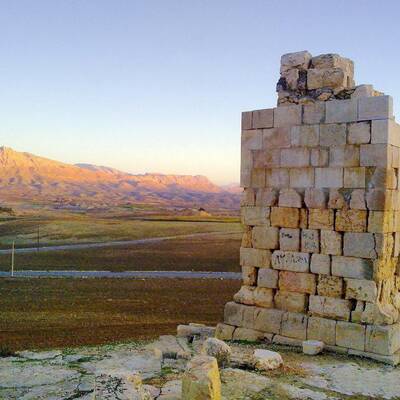
Historical City of Lidoma
Fars province has many monuments related to Achaemenid dynasty that is famous among tourists, however, the name of Lidoma has probably been less heard. Lidoma is an ancient site close to Nourabad city, the capital of Mamasani county. This area was a prospered city in time of Achaemenids that was located along the Royal Road; between Susa and Persepolis. Today, Lidoma is placed 30 kilometers northwest of Nourabad.
About 30000 clay tablets were discovered in Persepolis between 1312 and 1316 AH. These inscriptions were sent to Chicago University to assess their contents. Research showed that 13 cities were erected in time of Achaemenids within the range of the current Mamasani county. One of these cities was named Lidoma.
After 20 years a Japanese group started an excavation expedition in the region. The operation unearthed a building very similar to the palaces of Darius, Ardashir and Xerxes.
Japanese found firstly two columns; The first base was grey with geometric netted grooves in form of a palm leave. It was exactly built-in Achaemenid style. The Lotus flower carved all around the column indicates the art and architecture of Achaemenid dynasty. The second column is also grey with a geometric pattern like palm leave and lotus.
The findings showed that there was a columned building in Lidoma in which the columns were similar to the hall of Hundred Columns (Sad Sotoun) in Persepolis. The diameter of columns’ bases is more than one meter and their height was probably between 12 and 14 meters. Many stonewares were also discovered that are similar to the best wares in Persepolis treasury.
In total, archaeologists estimate that Lidoma was one of the cities of the Royal Road in which the Achaemenid kings were resting while traveling on Royal Road. It is estimated Lidoma to be related to the period of Darius or Xerxes.
Another group of archaeologists from Australia restarted research on the region between 1381 to 1383 that were continued to 1386 SH and the following years.
The radioactive experiments carried out by Australian researchers showed that a part of stones in Lidoma palace was being used in 2nd century BC. In addition, a castle was built over this palace in Qajar period that probably destroyed a part of its architecture documents and ruined the main palace. The Qajar castle was called Old Castle or Kali Castle that is not remained today.
After each phase of research Lidoma palace is buried again; the objects founded during excavations have been transferred to the Museum of Bishapur.
